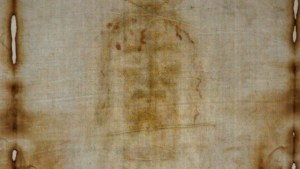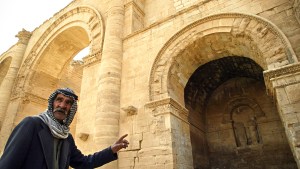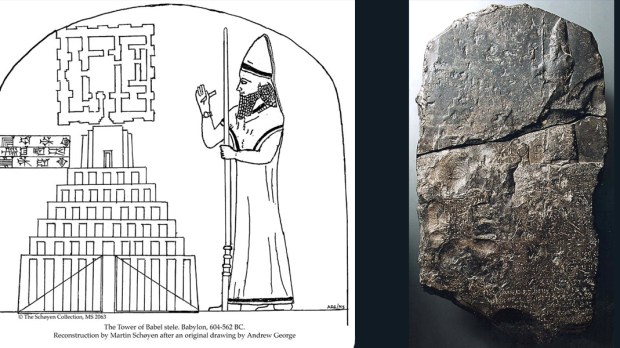The account of the Tower of Babel in the Old Testament tells a tale of the ultimate chutzpah: a people decided to build a tower that could reach heaven:
“Come, let us build ourselves a city and a tower with its top in the sky,and so make a name for ourselves; otherwise we shall be scattered all over the earth.” (Genesis 11:4)
Not pleased, the Bible tells us, the Lord put a stop to this presumptuousness, and made them speak in different languages so they couldn’t understand each other, thus “scattering them over all the earth.”
Now compelling evidence has emerged that the Tower of Babel actually existed, and that the story is more than just a symbolic tale of man’s hubris.
A stone tablet from the private collection of a Norwegian businessman Martin Schøyen includes the clearest image ever found of the Great Ziggurat of Babylon, according to Andrew George, Professor of Babylonian history at the University of London.
The tablet, which has been captured on film for the first time by Smithsonian Magazine, shows an illustration of a pyramid-like structure, with a depiction of King Nebuchadnezzar II, who ruled Babylon from 605-562 BC, standing next to it.
First built around the time of Hammurabi (1792-1750 BC), the ziggurat in Babylon was in a serious state of disrepair by the time Alexander I the Great came along, and was taken down in 331 BC.
With no evidence to tell us what it actually looked like, until now we have only had, in the words of the Schøyen Collection’s catalog, “a long series of fanciful paintings to rely on.”
This tablet, for the first time, gives us a contemporary illustration of the tower; along with an inscription giving us an account of Nebuchadnezzar II’s building plans and the restoration process.
The Schøyen Collection has documented the translation of the inscription on the tablet, noting that it contains a helpful caption identifying the drawing as:
ETEMENANKI: ZIKKURAT BABIBLI: “THE HOUSE, THE FOUNDATION OF HEAVEN AND EARTH, ZIGGURAT IN BABYLON”
The inscription goes on to describe the restoration process:
“NEBUCHADNEZZAR, KING OF BABYLON AM I – IN ORDER TO COMPLETE E-TEMEN-ANKI AND E-UR-ME-IMIN-ANKI I MOBILIZED ALL COUNTRIES EVERYWHERE, EACH AND EVERY RULER WHO HAD BEEN RAISED TO PROMINENCE OVER ALL THE PEOPLE OF THE WORLD – THE BASE I FILLED IN TO MAKE A HIGH TERRACE. I BUILT THEIR STRUCTURES WITH BITUMEN AND BAKED BRICK THROUGHOUT. I COMPLETED IT RAISING ITS TOP TO THE HEAVEN, MAKING IT GLEAM BRIGHT AS THE SUN”
The illustration of Nebuchadnezzar II shows him
“with his royal conical hat, holding a staff in his left hand and a scroll with the rebuilding plans of the Tower (or a foundation nail) in his outstretched right hand.”
To watch the Smithsonian’s short documentary on the importance of this discovery, click here.

Read more:
Shroud of Turin coins may finally have been identified

Read more:
Palace of biblical king discovered under shrine destroyed by ISIS

